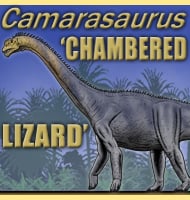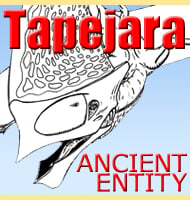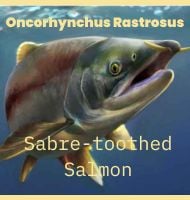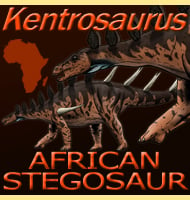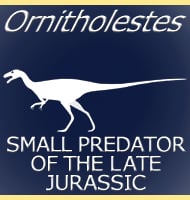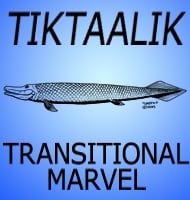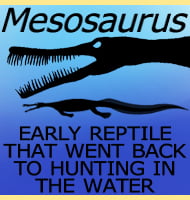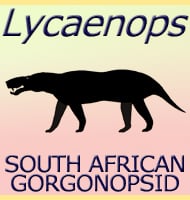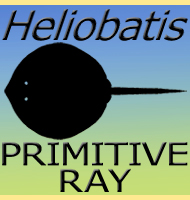In Depth
The name Prosaurolophus was decided for this genus of hadrosaurid dinosaur on the basis that it was believed to have been similar to but lived before another genus called Saurolophus. However, this interpretation is now somewhat more controversial with different palaeontologists citing Prosaurolophus as being more closely related to other varying genera other than Saurolophus. A more basic and easier to accept interpretation of Prosaurolophus is that it is a saurolophine hadrosaurid. This conclusion is reached upon the simple fact that Prosaurolophus has a small and solid crest as opposed to the hollow (and often more elaborate) crests of the lambeosaurines. A saurolophine hadrosaur is a member of the sub-group Saurolophinae, a newer term for the hadrosaurids that were mostly previously included with the Hadrosaurinae and described as hadrosaurines (at the time of writing only Hadrosaurus remains classified as a hadrosaurine). The shapes of saurolophine hadrosaurids head crests can differ, but in Prosaurolophus the head is small and triangular.
The first Prosaurolophus fossils were discovered in Alberta, Canada in 1915 by Barnum Brown. Later in 1916, Brown described the genus based upon an incomplete skull that was actually incorrectly restored. Later and better preserved discoveries revealed the skull to actually be shorter than the reconstruction. The type species was established as P. maximus, and while further remains were attributed to the genus, a new species would not be named until 1992. In this year Jack R. Horner, a palaeontologist internationally recognised for his work with hadrosaurid dinosaurs, described P. blackfeetensis, a second species described from fossil material collected from a bone bed of several individuals. At the time of writing, the type species is P. maximus is only found in Alberta, while P. blackfeetensis is known only from Montana.
There are two key areas of difference between the two current species of Prosaurolophus. The first is the morphological difference between the two, with P. blackfeetensis having a steeper and taller face than P. maximus when viewed from the side. The second is actually the analysis of the fossils sites, with P. maximus inhabiting lowland areas near the coastline of the Western Interior Seaway, and P. blackfeetensis being in found in an area further inland and at what would have been a higher elevation at the time than the Canadian deposits. This latter revelation about what would have been differing ecosystems might also explain the differences in skull morphology between the two.
Since P. blackfeetensis essentially has a taller skull, it would have a greater amount of space for housing larger and hence stronger jaw closing muscles, as well as having a proportionately closer placement of food in the mouth to the point of jaw articulation. The latter would allow for slightly greater focusing of jaw strength upon processing plant material. Given that plants that are further inland and at higher altitudes are usually growing in dryer conditions, they are usually tougher so that they can preserve moisture. P. maximus by contrast with its location nearer a huge body of water was more likely living and foraging in wetland ecosystems. With the vegetation of such ecosystems being much softer than most inland varieties, a stronger bite is just not necessary. The exact diet of what hadrosaurid dinosaurs ate is a long running debate that is fuelled by fossil evidence that supports the eating both soft wetland plants and tougher inland plants. There is no good reason to assume however that hadrosaurids, perhaps like Prosaurolophus could over time adapt to different conditions.
Since the naming of P. blackfeetensis was born out of the discovery of several individuals collected in a bone bed, this raises the notion that Prosaurolophus lived in groups. Although this has been explained as the possible clustering of several animals around a watering hole in a drought (which dried up before the rains began and refilled it) it does not entirely discount the notion that Prosaurolophus lived in groups the rest of the time. Not only could these dinosaurs have been living in the same group when the draught began, it would make ecological sense for herbivorous animals which are usually prey to other animals to live in a group. This safety in numbers principal means that several individuals are much more likely to detect a predator than a single individual too engrossed in feeding or drinking to notice. This of course assumes that dinosaurs lived in a similar manner to many types of unrelated animals we know today, but there is no solid evidence that they did not either.
Hadrosaurid dinosaurs were physically well adapted to be generalists. Like its relatives Prosaurolophus would have been quite comfortable in either bipedal or quadrupedal postures, enabling energy efficient locomotion or versatility reaching different types of plants. The keratinous beak that formed the front of the mouth could effectively snip off plants while the batteries of grinding teeth in the mouth processed plants to an easily digestible pulp. Analysis of scleral rings, the bony supports of the eye, also indicates that Prosaurolophus was cathemeral. This means that Prosaurolophus was active for short periods throughout the day and did not need to wait for a specific time of the day or night to be active.
Living in North America during the late Cretaceous period, the two species of Prosaurolophus would have still encountered the same rough sets of other dinosaurs. Most common of these would have been other hadrosaurids like Maiasaura, but also including lambeosaurines like Parasaurolophus, Corythosaurus and Hypacrosaurus, horned ceratopsian dinosaurs such as Centrosaurus and Styracosaurus, to armoured dinosaurs like the ankylosaur Euoplocephalus and the nodosaur Edmontonia. Predatory threats however may have come from large theropods like the tyrannosaurs Daspletosaurus and Gorgosaurus, but even smaller theropods like Troodon could have posed a threat, particularly to smaller juveniles.
Further Reading
– Cranial morphology of Prosaurolophus (Ornithischia: Hadrosauridae) with descriptions of two new hadrosaurid species and an evaluation of hadrosaurid phylogenetic relationships, Jack R. Horner - 1992. – Dyoplosaurus acutosquameus, a new genus and species of armoured dinosaur; and notes on a skeleton of Prosaurolophus maximus, William A. Parks - 1924. – Taphonomy of three dinosaur bone beds in the Upper Cretaceous Two Medicine Formation of northwestern Montana: Evidence for drought-related mortality, Raymond R. Rogers - 1990. – Cranial anatomy and variation in Prosaurolophus maximus (Dinosauria: Hadrosauridae). – Zoological Journal of the Linnean Society. 167 (4): 531–568. – C. T. McGarrity, N. E. Campione & D. C. Evans – 2013. – Description of juvenile specimens of Prosaurolophus maximus (Hadrosauridae: Saurolophinae) from the Upper Cretaceous Bearpaw Formation of southern Alberta, Canada, reveals ontogenetic changes in crest morphology. – Journal of Vertebrate Paleontology: e1547310. – Eamon T. Drysdale, Fran�ois Therrien, Darla K. Zelenitsky, David B. Weishampel & David C. Evans – 2019.

